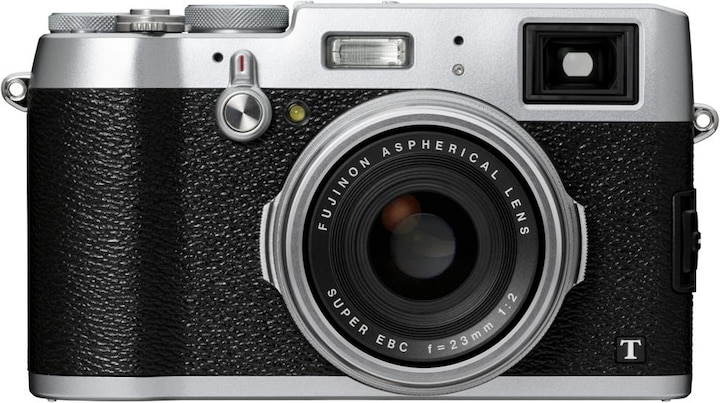

Shooting from the hip: Street Photography – a how-to guide
After portrait and landscape photography, street photography is one of the most popular disciplines. That's why I would like to share some of my most valuable tips and tricks with you.
You’re probably aware of the fact that street photography isn’t about photographing the actual street. Instead, it’s all about capturing the life that’s taking place in it. The challenge is to capture the hustle and bustle as unstaged and authentic as possible – warts and all. And you needn’t necessarily be in New York to do so. Street photography happens wherever people and buildings interact.
1. Choosing your subject
The streets of this world are packed with potential subjects. But what should you be focussing on when you’re out and about in a one-horse town or a concrete megalopolis? A popular subject that I tend to go for the most myself is emphasising contrasts. Old buildings and young people; enormous people in minute cars; drunk guys in front of prohibition signs… you get the idea. Socially critical, funny or sarcastic messages are usually the most interesting.
People tend to construct symmetrical buildings at right angles. This, of course, has to do with statics and stability. But I’m also convinced that architects long for their creations to be photographed and admired. Let’s do them a favour and look out for symmetries and clear lines as they're incredibly pleasing to the human eye.
Graffiti and shadows are two further design elements that are great to incorporate in street photography. Graffiti usually conveys a message. Make use of this by combining it with passers-by. Shadows are particularly interesting when the sun is low – they will add a little magic to your snaps.
2. Biting the bullet: Photographing people
People play an extremely important role in street photography. However, photos depicting recognisable people are a legal grey area. It is generally prohibited to photograph anyone without their permission – let alone publish a photo of them. Nonetheless, the main goal of a lot of street photographers is to capture real people, real moments and real emotions. And let’s face it, asking for permission beforehand kind of defeats the purpose of spontaneity. So it goes without saying that snapping people without their permission and potentially getting caught is quite literally not up everyone’s alley.
Personally, I strongly believe that your comfort zone can be stretched to the moon and back, provided you’re dedicated enough. It’s important to realise that nervousness shows and prevents you from pressing the shutter button. Hesitation is the street photographer's biggest enemy – it makes you look like a weirdo and will quite possibly make you miss that crucial moment. The only thing for it is to put yourself in uncomfortable situations as often as possible. Get as close as you can and push yourself to the point where you’re not even flinching when taking a macro photo of somebody’s nose hair. As with everything, practice makes perfect.

If you’ve taken a photo that clearly shows one or several people, it goes without saying that you should ask the “victim” for permission afterwards. In my experience, only very few people will ask you to delete the picture. To get an overview of the legal situation in Switzerland, click here (in German).
3. Emotions and crucial moments
When you’re roaming the streets scouting for interesting subjects, human emotions play an extremely important role. They usually only appear for a split second and are reflected in somebody’s facial expression, gesture or body language. Look out for those crucial moments and have your camera ready.
4. Recipes for success and techniques
Some subjects of desire are camera-shy and need a little time to appear and develop their expressiveness. There is only one way to capture these rare species: wait. I’ve stood in front of cool backgrounds for what felt like an eternity, waiting for an interesting person to complete the picture. Unfortunately, those moments often feel like you’re the only person on a planet; like a scene from an apocalyptic Hollywood movie. You’ve got to trust me on this one: it’s always worth the wait.
Can’t help but feel that your street snaps just aren’t cutting it? Try changing your perspective! You could shoot at ground level and focus on reflections in puddles, for example. Or hold the camera above your head to get a better overview. Play with perspectives and distance to give your subject more weight. These tips are also great if you need a break from the above-mentioned waiting strategy.
Many street photographers use the hip shooting technique to snap people without them noticing. This technique involves pointing the camera at your subject and pushing the shutter button without looking through the viewfinder. It requires some practice and you’ll need to be very familiar with your camera. Nowadays, many cameras have a fold-out display; a feature that greatly simplifies this technique. Some photographers like using a smartphone app or a remote release.
Do you find that your subjects are interesting in real life but don’t really come into their own on photo? The reason for this could be that you weren’t close enough. Just go for it, get up close and don’t forget to smile – it will defuse the majority of uncomfortable situations.
5. Equipment
It doesn’t really matter what kind of camera you’re using. As long as you’re willing to be patient and walk a few metres, there’s nothing stopping you from giving street photography a go. Of course there are some cameras and lenses out there that will help you get that street look. Traditionally, a focal length between 28mm and 50mm (full format) is used. These focal lengths create a perspective similar to the human eye's and allow you to photograph your subjects together with enough background and context. In view of the fact that you generally only have a split second to capture those special moments, it is helpful to have a camera that produces strong image quality despite high sensor sensitivity (ISO value). In other words, this will help you capture great moments without motion blur, even if lighting conditions are tricky.
The lowdown
Tap into the sheer endless possibilities of street photography by going through life with open eyes, a fast index finger and a pinch of courage.
Are you particularly pleased with a pic you took? We would love to see it so why not share it either in the comments field or on Facebook!
Which lens is suitable for street photography?
There’s no right or wrong – you can take great pictures with any good camera and lens. Generally speaking, compact and light cameras are better suited for the above-mentioned reasons. Choose a small system camera over a fully-grown, heavy DSLR.
If you have a system camera, I would suggest getting a lens with fixed focal length. You’re probably thinking: why not get a handy zoom lens? Because good street photographers should always be moving. They crouch and quite literally bends over backwards to get the perfect perspective. A fixed focal length will also teach you to see the photo you want before you’ve pulled your camera out. Using fixed focal length will sharpen your senses for photography.
Here are just some examples of lenses that are great for street photography:

The Canon EF 50 mm f1.8, aka "nifty fifty" or "plastic fantastic", is legendary. Low-priced, sharp and lightweight. The small depth of field is great for emphasising objects and delivering beautiful bokeh. Love it.
The Nikon AF-S DX 35mm f/1.8G has a wider angle. This means that you can cram more scenery into one picture – a perk that many street photographers appreciate..
Camera tips
If you’re looking for a compact camera, one of these devices may be what you need (to list but a few):
More photography products
A camera in one hand, an airline ticket in the other. That's what I call a perfect situation.
Find out more about me and my photography on <a href="https://www.instagram.com/35waves/" target="_blank">Instagram</a> or on my <a href="https://www.35waves.com/" target="_blank">website</a>






